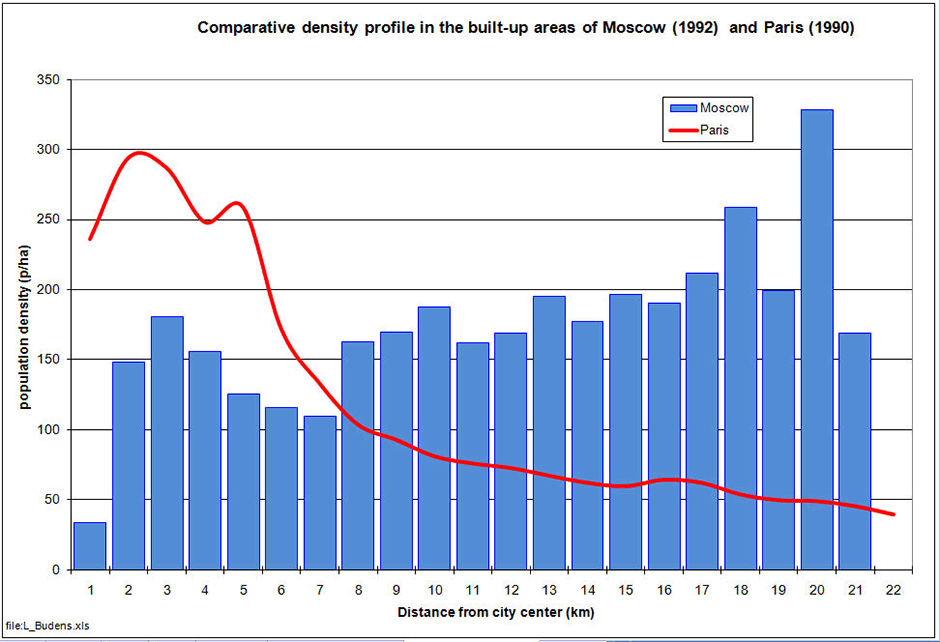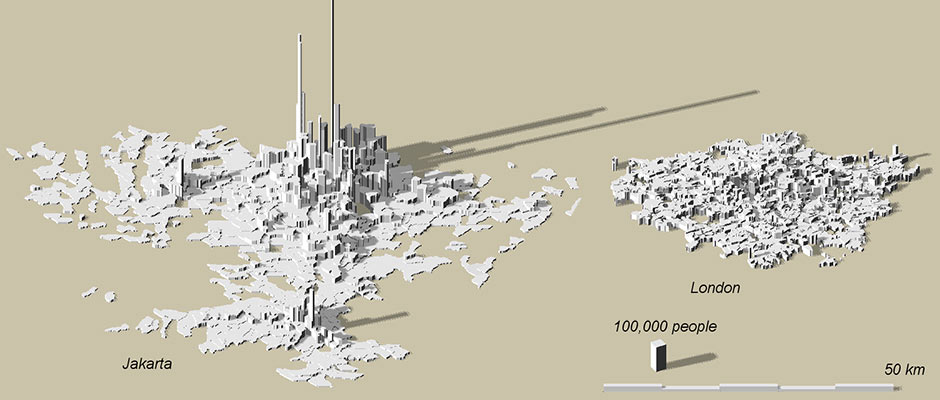Publications
As an urban planner, my goal is to translate the theories and equations (and sometimes the jargon) of urban economists into approaches and methods that can lead to concrete decision-making in the everyday world of an urban planning office.
Alain Bertaud
Order without Design
In Order without Design, Mr. Bertaud argues that cities and markets are inseparable from each other if they are to work efficiently. Urban economics gives us the tools to apply these ideas and produce cities that both increase human productivity and human welfare.
The first chapter of Alain Bertaud’s 2018 book, Order Without Design, is available as a preview here. The full book can be purchased here:
Publications by topic
The following reports and papers, produced at the request of a municipality, the World Bank, or another city stakeholder, illustrate Mr. Bertaud’s pathbreaking approaches and methods.
Urban Spatial Structures and City Planning
- The Last Utopia: The 15-Minute City (2022)
- Average Built-up Densities in 58 Metropolis (2013)
- “Converting Land into Affordable Housing “ (2012, 1.3 MB presentation)
- World Bank’s Sixth Urban Research and Knowledge Symposium
- “Ideology and Power: Impact on urban shape of cities in China and Vietnam” (2012, 4 MB)
- Architectura y Urbanismo #225, Brazil
- Spatial Tools to Analyze the Impact of Land Markets on Affordability and Urban Spatial Structures (2008, World Bank)
- Cultural Heritage, Preservation, and Markets (2005)
- UNESCO Conference, Vienna
- “The Spatial Organization of Cities: Deliberate Outcome or Unforeseen Consequence?” (2004, 3.9 MB)
- “Política del Suelo y vivienda: la experiencia international”, Ciudad de México (2003, 3.5 MB presentation)
- Policy responses to informal housing : regulatory reform, Princeton (2003, 3 MB presentation)
- “Analyzing Building-Height Restrictions: Predicted Impacts, Welfare Costs, and a Case Study of Bangalore, India” (2003, 0.5 MB)
- with Jan K. Brueckner
- Planning Course for Chinese Urban Planners (2003)
- prepared for China National School of Administration (CNSA) and the World Bank Institute
- Module 1 : The use and value of urban planning
- Module 2 : The role of markets, urban planners and government
- Module 3 : The spatial structure of cities: International examples of the interaction of government, markets and topography
- Module 4 : Practical decisions facing urban planners
- “Urban Planning and Air Pollution in South Asia”(2002, 0.3 MB)
- “Note on Urban Transport and Cities Spatial Structures” (2002, 3.5 MB)
- ABCDE Conference, April 2002
- “Efficiency in Land Use and Infrastructure Design” (1988, 6.5 MB)
- with Marie Agnes Bertaud and James O. Wright.
Comparative Urban Structures
- International Comparison: Spatial Development and Poverty – An application to Gauteng, South Africa (2008, 6 MB presentation)
- Pretoria, South Africa
- The Spatial Distribution of Population in 50 World Cities: Implications for Economies in Transition (2003, 2 MB)
- with Stephen Malpezzi
- Metropolitan structures around the World (2003, 8 MB presentation)
- Marikina, the Philippines
- La Estructura Espacial de Áreas Metropolitanas: El Papel de los Urbanistas en una Economía de Mercado (Panama, 2003, 2.3 MB presentation)
- Metropolis: A Measure of the Spatial Organization of 7 Large Cities (2001, 2.3 MB)
Asian Cities
- Afghanistan:
- Kabul Urban Development Issues (2005, 5 MB)
- China:
- Housing Affordability in China; A Stock and Flow Approach (Beijing, 2009, 3 MB)
- Housing Affordability II: “A stock and flow approach including farmers’ urban housing” (CPN Urban Congress, Beijing, July 14-15, 2008)
- Housing Affordability, The supply side / 低价住房的供给及相关政策 – 北京? 2007年7月19日 (Beijing, 2007, 3 MB presentation)
- Urban Land Use Issues (August 2007, 4 MB)
- Urbanization in 2 towns in Sichuan Province, Land Use and Land Pricing Issues (2006, 3 MB)
- Spatial Study of the Pearl River Delta Metropolitan Region: A Study Proposal (2001, 3.9 MB)
- Measuring Constraints on Land Supply- The case of Hong Kong (1997, 0.6 MB)
- Iran
- Tehran spatial issues (2003, 5 MB)
- India
- Ahmedabad: More but Different Government for “Slum Free” and Livable Cities (2012, 6 MB)
- Ahmedabad Report (2012, 4 MB)
- Mumbai FSI/FAR Conundrum: Should Mumbai FSI (FAR) be increased? who will benefit? (revised 2011, 0.6 MB)
- Mumbai: why reform the current FSI system?, experience in other cities (2008, 7 MB)
- FSI restrictions and Real Estate Markets in Mumbai (2003, 1.3 MB)
- with Jan Brueckner
- The economic impact of land and urban planning regulations in India (2002, 0.2 MB)
- Bangalore: Note on Land Issues” (2002, 1 MB)
- Ahmedabad: Land Use Issues & Recommendations (1996, 2.1 MB)
- Indonesia
- Surabaya: Mobility and Housing Issues (2012, 5 MB)
- Land use regulations in Indonesia- Constraints imposed on the poor (1989, 1.3 MB)
- Maldives
- The Issue of Urban Land Scarcity in the Maldives (2002, 0.5 MB)
- Vietnam:
African Cities
- South Africa
- Housing Policy and Urban Spatial Structures in South Africa (Pretoria, 2009, 3 MB)
- Gauteng urban spatial structure: Evolution of population densities since 1990: Could a new transport network accelerate the evolution of Gauteng spatial structure toward “normalcy”? (Pretoria, 2008, 6 MB presentation)
European Cities
- Urban development in Albania: the success story of the informal sector (2006, 2 MB)
- The Spatial Structures of Central and Eastern European cities: more European than Socialist? (“Winds of Societal Change: Remaking Post-communist Cities“, the Russian and East European Center (REEC), University of Illinois at Urbana-Champaign (2004)
- PROSTOROVÁ STRUKTURA STŘEDO -A VÝCHODOEVROPSKÝCH MĚST: JSOU VÍCE EVROPSKÁ NEŽ SOCIALISTICKÁ? (University of Illinois, Urbana, 2004, 0.5 MB)
- Note on Prague’s City Structure (2002, 0.5 MB)
- with Marie-Agnès Bertaud
- Riga (Latvia) Spatial Structure (2002, 6 MB)
- The Spatial Development of Warsaw Metropolitan Area (2000, 1.6 MB)
- Co-authored with Marie Agnes Bertaud (PDF 1.6 Meg)
- The spatial development of Budapest (1999, 5 MB)
- Socialist Cities without Land Markets (Journal of Urban Economics, 1997)
- with Bertrand Renaud
- Other versions:
- Cities Without Land Markets: Location and Land Use in the Socialist City (1995, World Bank working paper, 0.3 MB)
- ГОРОДА БЕЗ ЗЕМЕЛЬНЫХ РЫНКОВ: МЕСТОПОЛОЖЕНИЕ И ИСПОЛЬЗОВАНИЕ ЗЕМЛИ (1994, 1.1 MB)
- “Cracow in the Twenty First Century: Princes or Merchants? A city’s structure under the conflicting influences of land markets, zoning regulations and a socialist past (1994/95, 4.5 MB)
North, Central and South American Cities
- Clearing the Air in Atlanta: Transit and Smart Growth or Conventional Economics? (2002, 3.6 MB)
- The Costs of Utopia -Brasilia, Johannesburg and Moscow (2001, 1.3 MB)
- Sprawl and urban spatial structures: growing pains or real issue? (2005, 28 MB, Presentation)
- Brasilia’s Spatial Structure: Between the Cult of Design and Markets (2010, 3 MB)
Land Use and Financial Models – AKA Bertaud Model
Land use and financial models are used to test the feasibility of large land development projects. They can also be used to test the affordability of land use regulations. They allow trade off between many different parameters, land use, land use intensity (FAR), rate of interest, scheduling of works. They should be used from the early design stage to completion of the project. They should not be used after design is completed but in parallel with design. A number of models used in real projects in real cities are presented here. Each model is different from the other reflecting the different issues faced by the land development project.
- МОДЕЛЬ ПОДГОТОВКИ ПРОЕКТА РАЗВИТИЯ Ален Берто & Сергей Истомин (1994, 3 MB)
- Users’ Spreadsheet for above manual
Links
Articles, columns and biographies
- Alain Bertaud, Mercatus Center
- Alain Bertaud | Regular writings on Caos Planejado (Portuguese)
- What is Wrong with Henry George-Type Taxation | City Journal
Additional links and sources:
Graphs
The profile of urban built-up densities may reveal the economic past history of a city

This graph shows the difference in a city’s spatial structure between Moscow that was “designed” by a central planning organization and Paris that was shaped mostly by market forces. Although densities are lower in Paris than in Moscow, commuting distance are much higher in Moscow because of the differences in the density profile (most people are farther away from the center in Moscow than in Paris).
The pattern of commuting trips shows how the labor market works in different spatial structures

Urban densities are not trivial, they severely limit the transport mode choice and change only very slowly
Because of the large differences in densities between Atlanta and Barcelona about the same length of metro line is accessible to 60% of the population in Barcelona but only 4% in Atlanta. The low density of Atlanta render this city improper for rail transit.

Spatial Distribution of Population in Jakarta and London (represented at the same scale; from 1990 census data):

Designing and tracing new streets on the ground in fast growing cities is the main task of urban planners

In Yemen in 1972, Alain Bertaud and two assistants surveyors tracing new streets for the expansion of Saada, in the north of the country.
